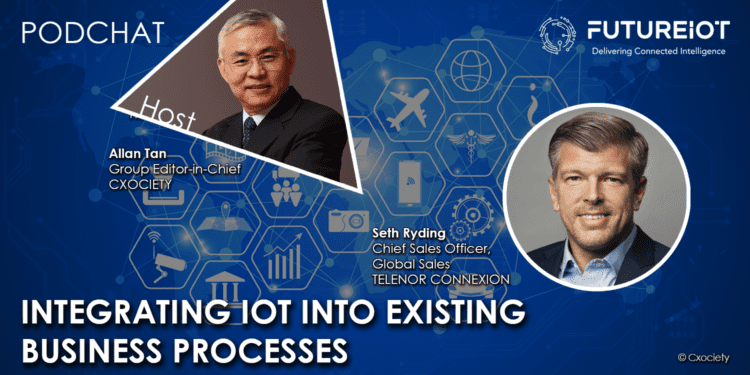For decades industrial operations have used sensors to automate parts of the processes. In many cases, the automation was mainly in the collection of telemetry data. Most processes still required human interaction to push things along.
In recent years, the convergence of IoT technologies with machine learning, artificial intelligence, and cloud, along with automation, have raised the possibility of putting smart IoT technology into business processes or workflows with the idea of automating these with minimum human intervention.
Seth Ryding, chief sales officer (CSO) global sales, Telenor Connexion, acknowledges that how IoT is valued by a business varies from industry to industry.
“There are general values that you see in different verticals such as increased reliability, predictability and being able to collect real time data. You can also add a new customer value that can generate new charging models for users. The way you operate your business and the transition from selling a product to selling a product as a service brings new and shifts the total business value,” he continued.
How do average business and operations leaders in organisations see IoT?
Seth Ryding: There are always two sides to a coin. There are risks and, in some cases, hesitation in moving into a new solution. The pandemic has shown us that those who had made or initiated the transition towards a connected solution pre-pandemic, have been much stronger when it comes to continuing through the pandemic.
What challenges must CIOs address if called upon by leadership to introduce IoT into business processes whether it is workflow or automation or actual operations?
Seth Ryding: An IoT solution is something the whole company needs to stand behind. CIOs and IT heads need to be well prepared to have a good plan about security and capabilities within the company and have a clear view on how they want to create their solution.
Things are evolving so fast and are so complex so the faster you develop your solution and focus on the customer value; it helps the operations process.
When is the best time to consider adopting IoT into the business processes? If yes, how do you minimise disruption and risk to existing operations?
Seth Ryding: I would say there is no time to wait. Looking from an employment perspective, we are living in a time where you can recruit people anywhere in the world which means it is easier to acquire competencies for areas you want to develop. It might just take a little different approach on how you do it.
What is your advice for CIOs and CTOs to help them guide the successful adoption of IoT into the business process?
Seth Ryding: You need to focus on what value you want to bring. Without the value that is related to your connected solution, there is really no point of doing it.
In addition, you need to be agile, try not to overcomplicate things. Create the solution that you can test and that you can scale and then start to roll it out.
Finally, you need to have the support of the whole management team as this is a transformation journey.
Click on the PodChat player to listen to the full discussion including some interesting use cases of IoT integration.
- In the context of a typical business operation – for example a financial institution, hospital or government – what is the business value of IoT?
- How do business and operations leaders in these organisations see IoT? Any preconceived ideas that may hinder adoption of IoT in business processes?
- For CIOs and heads of IT, what are the challenges they must address if called to introduce IoT across several business processes – for example process or workflow automation?
- Given the continuing uncertainties arising from the pandemic. Is now the best time to consider adopting IoT into business processes? If yes, what is the better approach to ensure minimal disruption to existing operations, and minimised risks?
- What is your advice for CIOs and CTOs to help guide the successful adoption of IoT into the business process?
- You spoke about partnerships and core competencies, what is Telenor Connexion’s value proposition in an organisation’s IoT journey?



